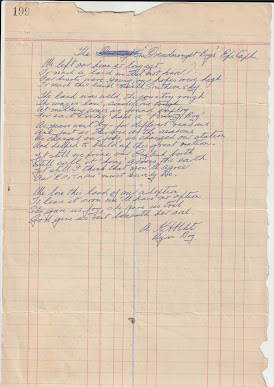Many of the Dreadnought Boys spent the whole of their new lives on the land. Norman Dunham was one of them. Born in Newcastle-on-Tyne UK in late 1905, Norman joined the Dreadnought Scheme and travelled to Sydney on the SS Esperance Bay, as a sixteen-year-old lad. He arrived on 11 September 1922, in a group of 60 Boys. He was sent with most of the others to the Scheyville Training Farm near Windsor, where the boys were introduced to Australian farming practices.
After training, his first job was at Mr Dal Wright's dairying and rice cropping farm near Leeton, in the Murrumbidgee Irrigation Area, where he remained for a couple of years before deciding to try life in Queensland.
In the Longreach area of Queensland, he was able to obtain employment with a tank-sinking contractor. However, after about a year, ill-health forced him to return south to the Leeton area, where he took casual employment at Yanco Agricultural High School and a number of farms near Leeton. When Mr Wright offered him the opportunity to be share-farming, Norman accepted and went on to grow several crops of rice on Mr Wright's farm.
In 1928, Mr WS Martin, of neighbouring Farm 983, asked Norman to become his share-farmer growing wheat and rice. Mr Martin and Norman made an agreement which remained in place for more than twenty-two years, until the farm was sold.
On 3 August 1929, at St Peter’s Church, Leeton, Norman married Gladys Minnie Cinderey, a Gloucestershire lass who had come to work in Mr and Mrs Wright's home. Norman and Gladys had three children—Denise, Peter and Rosemary.
When World War 2 broke out, Mr Martin (a World War I veteran), obtained an exemption from active service for Norman so that he could continue working the farm. Fuel was difficult to obtain during the years of the war, but Norman kept the large 500-acre irrigation farm in full production, by installing a charcoal gas producer to power his tractor.
In 1942, Norman purchased Farm 18 at Leeton. The farm was about 65 acres in area of irrigation land and Norman contributed to the war effort (on the home front) by growing a wide variety of vegetables. These were sent for canning at the Leeton Co-operative Cannery, which was supplying food to the troops fighting in WW2.
Following the war, Norman turned to mixed farming and ran a small herd of Aberdeen Angus cattle, raised pigs and fat lambs and kept poultry for meat and egg production.
In 1952, Mr Doug Mackellar, then chairman of the Rice Marketing Board, approached Norman and asked him to grow rice, as a share-farmer, on the Mackellar farm (1714). Assisted by son, Peter, Norman grew rice on the farm for about eight years. It was during this time, that Norman became the first farmer in the area to successfully sow rice from the air, into flooded bays.
During the fifty-eight years that he was engaged in farming activities, Norman Dunham not only saw many changes in farming practice on the Murrumbidgee Irrigation Area, but also was among those who helped develop them.
Norman and Gladys made a trip back to England in 1973, happily renewing contacts with family and friends whom they had not seen for over fifty years.
Norman passed away at his home, Farm 18 Leeton, on 30 March 1980 at the age of seventy-four years. He was a quiet unassuming man, well liked and held the respect of his many friends and neighbours. Gladys survived him for another 13 years. The family continued on with the farming.
(With thanks to Denise Vincent.)

B.jpg)
%20Sid%20Black.jpg)



